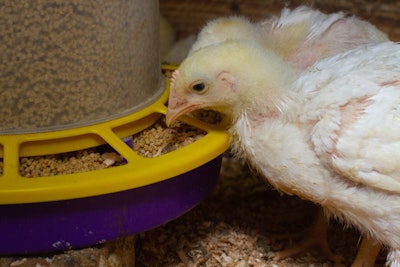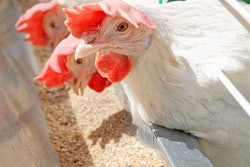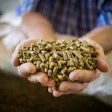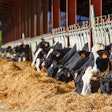
The last publication on poultry nutrient requirements was released in 1994
I have recently seen updates on nutrient specifications for broilers from most major genetic houses. The same goes for some serious vitamin and, surprisingly, trace mineral suppliers. Apparently, broiler micronutrition (vitamins and trace minerals) remains a dynamic field, at least in the commercial world, with few notable exceptions when it comes to academic research. Here, it should be reminded that the last NRC publication on poultry nutrient requirements was released in 1994. Back then, broilers were marketed at 8 plus weeks of age, whereas, fast forward 30 years or so, broilers go to market at 5-6 weeks of age – an improvement of about a week per decade. So, why we still do not have a highly respected authority like NRC review current literature and come up with new recommendations for modern broilers?
And, what about these recent recommendations from commercial entities? Are they trustworthy enough to make an official review unnecessary? For the time being, this is all we have, but we must understand how these recommendations were derived, what they mean and what is their purpose. Although the cost per broiler when it comes to total consumption and expense for vitamins and minerals is minimal, the same can be said about the true profitability. So, the old adage that these highly essential micronutrients cost but nothing is not a good point to start a conversation about modern broiler profitability.
Recommendations versus requirements
Requirements are what authoritative bodies like the NRC determine to be the optimal levels of each nutrient required for a population/flock of animals to grow efficiently and be healthy. They do not account for safety margins, such as disease, density stress, etc., although in some recent publications (other species) these are discussed even with limited data to rely upon. On the other hand, recommendations or dietary specifications is what we use to formulate broiler feeds with. As such, they include safety margins based on each nutritionist’s understanding of the conditions in the field.
Here is an example from my own practice: When I formulate a feed for a North European country, I do not overdo it with vitamin E as temperatures are not high enough to cause rapid lipid oxidation. In contrast, a broiler feed for Thailand would contain almost double my own dietary specification for this vitamin.
Commercial recommendations
First, we must say that recommendations that are published by genetic suppliers are generous enough to include any possible need of safety margins as they are released to a global audience. In addition, these commercial entities would not want to be accused of underfeeding their broilers, so their nutritionists come up with what they believe is best to avoid any and all potential problems. My only qualm here is why broilers growing so similarly have widely different recommendations in some cases by different genetic houses. I cannot be convinced that genetics cause such great disparity, so it must be the understanding and experience of the nutritionist who formulated these recommendations.
And here is the point of interest. These recommendations are only that – recommendations. They are not set in stone, and they can be challenged by any qualified nutritionist based on specific field conditions.
Next, we need to discuss recommendations from vitamin and trace mineral suppliers. These commercial entities conduct enough private research to know more about their products compared to the publicly available knowledge. Thus, they have a say when it comes to recommending their products, which can be varied and quite variable, especially when it comes to trace minerals, which is following the paradigm set by commercial vitamin suppliers. Again, as discussed for genetic suppliers, these recommendations are based on the best understanding of the nutritionists who work at the time for these companies and of course on safety margins that will ensure no one could blame them for broiler underfeeding.
Commercial versus own feed formulas
When a commercial nutritionist at a feed mill formulates a broiler feed for the open market, there is reason to follow the route of generous safety margins. Especially because such products may be stored for unknown periods of time before being consumed. The same is true when the same feed is going to be fed to different farms, each being probably at a different location and having its own problems.
In contrast, when a commercial nutritionist formulates broiler feeds for a specific farm only, then the exact conditions of the farm may negate some of these generous margins of safety recommended by different interested parties. In fact, there is enough evidence, academic and commercial, to suggest that this is not only possible but highly recommended as a route to improve profitability. And, this applies not only to vitamins and trace minerals but to all nutrients.
Challenge feeding
This is hardly a new concept, but one that few nutritionists or even animal producers want to engage with. However, in my experience, is a great tool that can provide tangible benefits. It works on farms that have their own research facilities or can make inferences based on historical data.
In essence, the nutritionist will challenge the animals via increased or decreased nutrient specifications in incremental steps of 5-10% (depending on the nutrient). It is a slow process, but when followed closely, it enables a nutritionist to remove all unnecessary margins of safety and include others that are actually needed. And, this applies not only to vitamins and trace minerals, but also to any other nutrient, assuming the final feed remains balanced according to established norms (these are better challenged in an academic setting and not on commercial farms).
In practice
In my own practice, I have been involved with vitamin and trace mineral nutrition since my undergraduate years. In fact, I published my first article in English in Pig International on this very same topic.
As a commercial nutritionist, I have a set of basic vitamin and trace mineral specifications for each species and then, according to specific conditions, I add what is needed. So, far it has worked very well for me, but I understand this might be contrary to commercial practice that calls for one premix for each animal and for each age.














